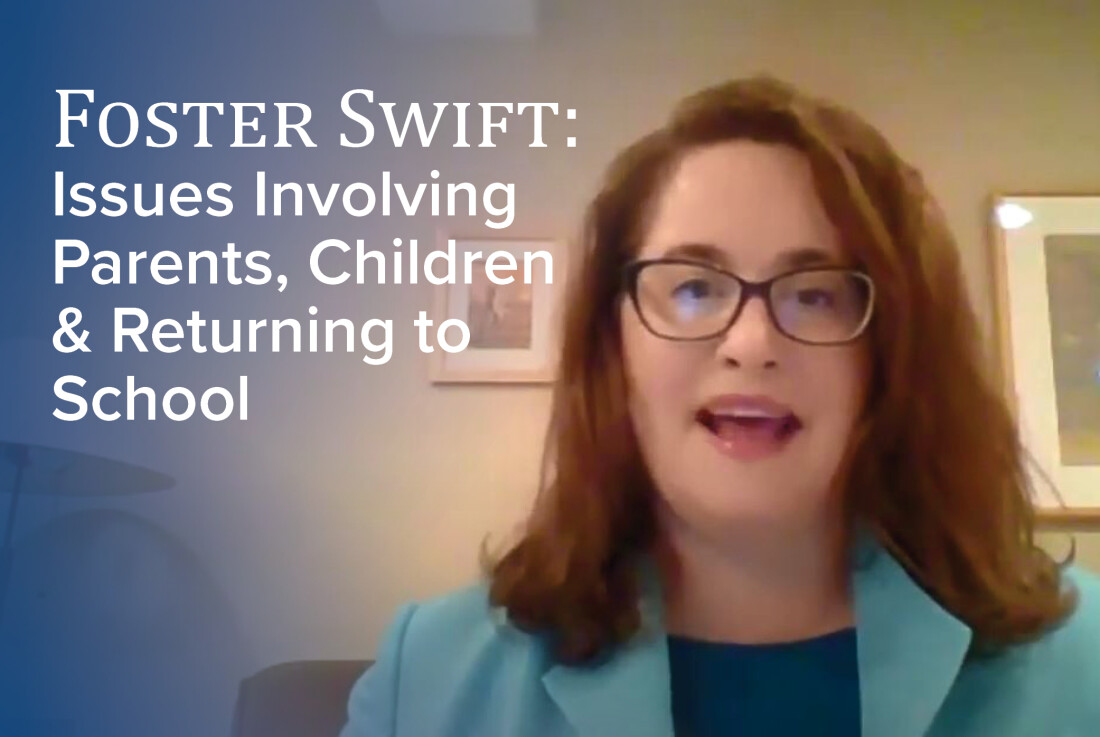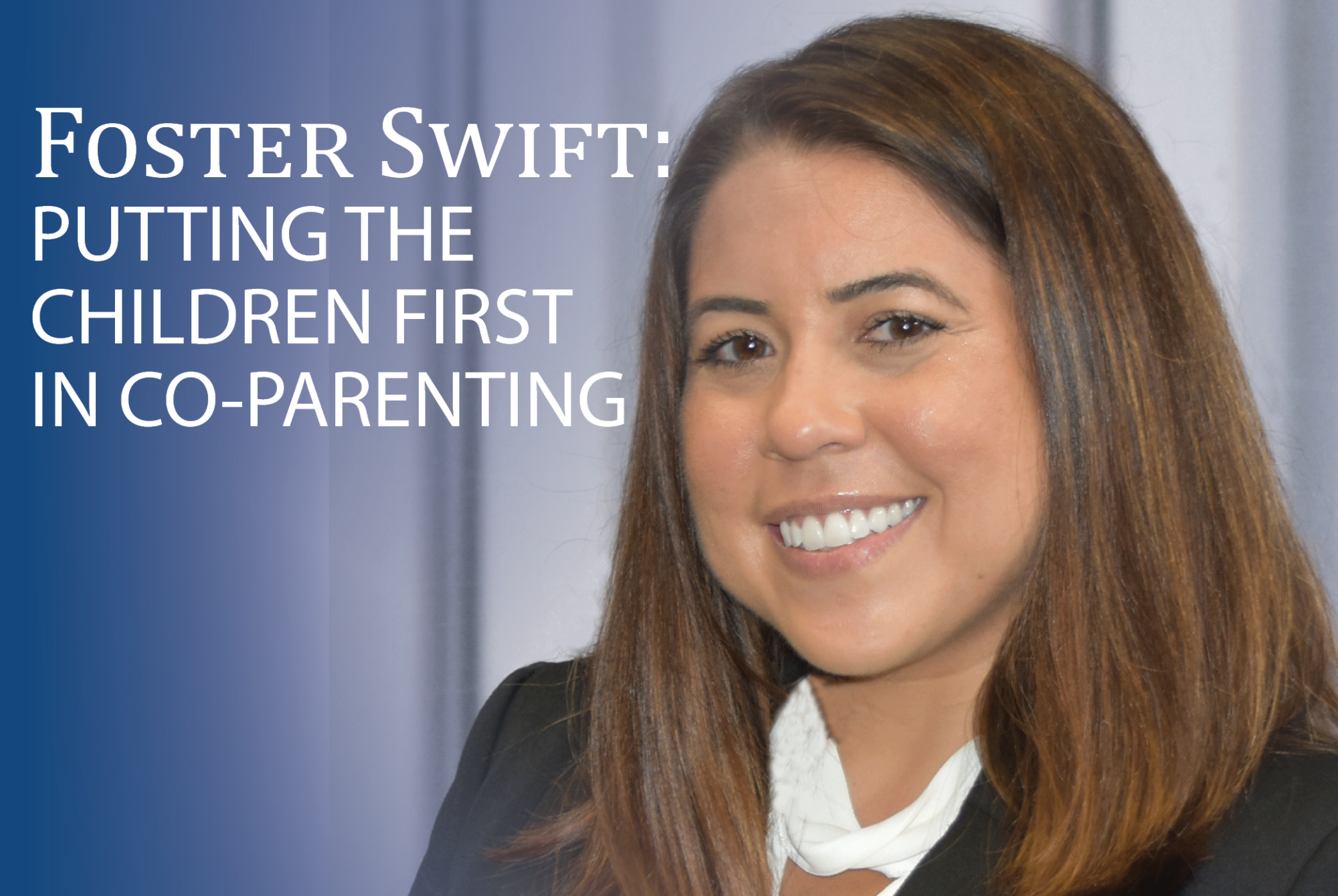How to Protect Your Business When the Marriage Fails
 Complicated divorces are less than ideal. A business in the mix invites potential complications.
Complicated divorces are less than ideal. A business in the mix invites potential complications.
A family-owned small business that is part of one spouse’s family fabric may even serve as revenue for more than just the divorcing couple. During a divorce, analyzing the business’ books may feel akin to analyzing the lives of the business owners and their family.
With years of experience helping clients navigate separations, our family law team at Foster Swift have put together some important things to know when it comes to divorces that involve a business.
What is marital property and what is not?
Broadly speaking, marital property is just about everything that a couple owns together. The key during every separation is knowing what falls in that category, and what doesn’t.
Generally included are anything and everything acquired between the day of the marriage to the day of the divorce. When a business is involved, that includes its assets, debts, property, vehicles, and beyond, in addition to personal assets.
Separate property is generally defined as any property that was acquired prior to the marriage, and any items that were acquired during the marriage via a gift or inheritance. Things that fall into this category, however, need to be treated as separate throughout the marriage for the court to consider it separate property.
Prenuptial Agreements.
Prenuptial agreements, or “prenups,” are the most well-known way that people protect their assets before being married. They divide marital property and carry heavy weight in splitting assets during a divorce, specifically when determining who has and does not have access to what assets.
However, it’s critical to know that prenups are informative, not dispositive. In other words, when it comes to a divorce, they are not treated as hardline rules by a judge, but rather as suggestions on how to handle matters that can be adjusted based on circumstances, most commonly the use of the assets. Based on findings like that, the judge will decide how much of the income and business should be awarded to each spouse, child contributions, marriage contributions, and beyond.
Also important to know when arranging prenuptial agreements is that child-related issues and custody in the agreement won’t be recognized by the court during the divorce. Signing one under problematic circumstances such as digress or nondisclosure of an asset or debt may also void all or part of the agreement, meaning it is imperative that everything is accounted for when putting it together.
What are some other ways to protect your assets?
There are several means by which business owners can protect their share of a business in the case of a separation.
- Buy/sell agreements — if the family business has more than one legal owner, a buy/sell agreement is a good foundation for splitting the assets under certain circumstances, and in some cases, a divorce will even trigger a transaction. These agreements should ideally be completed long before separation takes place.
- Post-nuptial agreements — Similar to pre-nuptial agreements, post-nuptial agreements contractually separate a couple’s assets, but after the marriage takes place. Many attorneys, however, do not encourage clients to pursue this option because it is not clearly enforceable.
- Inheritance and gifts — As noted before, inheritance and gifts from family and others are not considered marital property. If someone is inheriting an asset or a family-owned business, they can set it up strategically in this manner so it is not considered marital property.
Keeping the separation clean and financially beneficial.
Generally speaking, how much of the business you receive following a divorce is dependent on circumstances that were decided upon long before the separation occurred. However, there are strategies you can use to make the process as painless and financially beneficial as possible.
- Costs and benefits — Divorces are decided either by a court or by legal agreement outside of court. Often, there is one spouse who feels entitled to more, but the cost of litigation exceeds the money that could be received. Avoid litigating simply on principle to promote a cleaner and less stressful separation.
- Keep the books tidy — Separating business assets is easier when the business’ books are informative and kept up to date. If necessary, everything from income sources, expenses, bill payments, and how the business is intertwined with the household expenses may be taken into consideration by the court. The best course of action is to separate household/personal expenses from the business expenses entirely.
- Get a business lawyer, too — Having both a business lawyer and a family lawyer on your team will present the business in the most organized manner possible. This may lead to a better outcome in the event of a divorce.
Divorces are almost always difficult. Using these strategies and having an experienced team of lawyers on your side will make the process easier and can help protect you, and your businesses assets. If you have any questions, our family law practice at Foster Swift always stands ready to help.
Categories: Did you Know?, Divorce, Post Judgement

Andrea offers more than a decade of courtroom experience in civil, criminal, family law and juvenile matters. Drawn to the particular needs of clients in family law, Andrea has dedicated her time to serving those navigating the sometimes complex arena of the family court system.
View All Posts by Author ›
Jackie specializes in a wide range of family law matters, from straightforward divorce cases to family situations with more complicated circumstances. She also has extensive experience navigating family situations involving substance abuse, domestic violence, sexual assault, mental health concerns, co-parenting, and financial difficulties.
View All Posts by Author ›


 Share
Share


